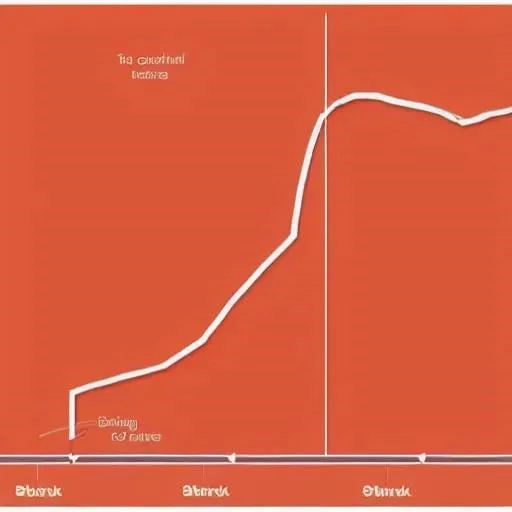In the vibrant tapestry of global commerce, the entrepreneurial spirit burns brighter than ever․ Across continents, countless individuals are passionately nurturing innovative ideas, yearning to transform them into thriving enterprises․ Yet, for many aspiring business owners, the journey from brilliant concept to market reality often encounters a formidable gatekeeper: access to capital․ Securing a new business loan can feel like navigating a labyrinth, fraught with complex requirements and seemingly insurmountable hurdles․ However, with strategic preparation and a profound understanding of what lenders truly seek, this path can become a remarkably clear highway to success․
The modern financial landscape, particularly for burgeoning ventures, demands more than just a compelling idea; it necessitates a meticulously constructed foundation of financial readiness and operational foresight․ Lenders, acting as crucial enablers of economic growth, are tasked with prudent risk assessment, ensuring that capital is allocated to ventures demonstrating genuine potential and robust repayment capabilities․ By integrating insights from seasoned industry professionals and carefully examining the essential pillars of loan qualification, we can demystify the process, empowering you to confidently approach financial institutions and secure the funding needed to launch your groundbreaking enterprise․
Here’s a breakdown of the critical elements lenders evaluate when considering a new business loan application, presented in a format ideal for quick reference:
| Requirement Category | Key Details and Lender Expectations | Importance for New Businesses | Reference/Link (Example) |
|---|---|---|---|
| Personal Financial Stability | Demonstrable outside income sufficient to cover personal expenses without drawing from the new business․ Strong personal credit score (700+ often preferred)․ | Absolutely critical; signals borrower reliability and reduces immediate pressure on startup cash flow․ | SBA 7(a) Loan Program Guidelines |
| Collateral & Liquidity | Ability to fully collateralize the loan with personal assets (e․g․, real estate equity) or significant liquid assets (cash on hand, typically 15-20% of loan amount)․ | Provides security for the lender and demonstrates the borrower’s personal stake and financial depth․ | Fundera Business Loan Application |
| Repayment Capacity | Clear evidence of outside income or other reliable sources to service annual loan payments, separate from projected business profits․ | Assures the lender that loan obligations can be met even during the business’s early, potentially lean, operational phases․ | NerdWallet Small Business Loan Info |
| Business Plan & Projections | A detailed, coherent business plan with logical, reasoned assumptions for every projection line item․ Demonstrates viability and operational understanding․ | Serves as the blueprint for success, convincing lenders of the business’s potential and the entrepreneur’s strategic thinking․ | SCORE Business Plan Template |
| Industry & Market Knowledge | A business concept that “makes sense” and an applicant who exhibits profound understanding of their product/service, market, and operational logistics․ | Inspires confidence that the entrepreneur can successfully execute the business model and navigate market challenges․ | Entrepreneur․com Startup Advice |
The Indispensable Pillars of Lender Confidence
According to an experienced SBA 7(a) lender, the foundation of any successful startup loan application rests upon three critical pillars: outside income, full collateralization, and outside repayment capacity․ These aren’t merely suggestions; for most lenders, particularly for new ventures, they are often deal-breakers․ The rationale is starkly clear: a startup business, by its very nature, carries inherent risks․ Lenders need assurances that the borrower can sustain personal living expenses and service the loan irrespective of the new business’s immediate profitability․ This external financial stability mitigates the early-stage volatility that can plague even the most promising endeavors, offering a vital safety net for both borrower and lender․
Consider the analogy of a sturdy bridge․ The business idea is the arch, promising to connect two points of value․ But without robust piers—your personal financial strength, collateral, and external repayment—that bridge remains vulnerable to collapse under the slightest economic tremor․ A high personal credit score, ideally 700 or above, dramatically reinforces these piers․ For loans under $500,000, this strong credit profile often translates into a high SBSS (Small Business Scoring Service) score, streamlining the initial underwriting process․ Lenders are, after all, looking for patterns of fiscal responsibility, and your personal credit history is an undeniably powerful indicator․
Crafting an Irresistible Business Plan: More Than Just Projections
While financial metrics form the backbone of a loan application, the narrative of your business—encapsulated in a comprehensive business plan—serves as its beating heart; This isn’t just about glossy projections; it’s about demonstrating a profound, almost surgical, understanding of your proposed venture․ An experienced lender emphasizes that a business must “make sense․” A drive-through chinchilla store, for instance, regardless of its creative packaging, inherently lacks the logical operational flow and market demand to inspire lender confidence․ Your plan must meticulously outline logistics, market analysis, competitive advantages, and, crucially, reasoned assumptions for every single financial projection line item․ This level of detail isn’t just an exercise in paperwork; it powerfully communicates your grasp of the business’s intrinsic mechanics and potential trajectory․
Furthermore, the presentation of your vision can be as critical as the vision itself․ When conversing with a loan officer, you are, in essence, selling the viability of your dream․ Confidence, clarity, and an intimate knowledge of your product or service are incredibly persuasive․ Being able to articulately explain the operational nuances, especially for location-based services, instills a sense of professionalism and preparedness․ This persuasive articulation, combined with a meticulously documented plan, acts as a powerful reinforcement, guiding the loan officer in championing your application through the internal approval processes․
Beyond the Application: Liquidity, Investors, and Future Growth
Even with impeccable credit and a stellar business plan, liquidity remains a paramount concern for lenders․ Expect to demonstrate significant cash on hand, typically 15-20% of the total loan amount, to cover your equity injection and maintain operational cash flow post-closing․ This substantial liquidity acts as a crucial buffer, providing your new business with the financial oxygen needed to navigate initial operational costs and unforeseen challenges without immediately straining its nascent revenue streams․
For entrepreneurs grappling with collateral shortfalls or seeking additional capital, engaging investors can be a remarkably effective strategy․ While many investors may shy away from full personal guarantees, a limited guarantee for a specific amount can bridge a collateral gap, satisfying lender requirements․ Crucially, investors also contribute to the vital liquidity pool, providing both the initial injection and ongoing cash reserves that lenders meticulously scrutinize․ Looking ahead, establishing business credit early by judiciously utilizing a business credit card can be a game-changer, laying the groundwork for larger, more favorable loans as your enterprise matures․ The evolving regulatory landscape, exemplified by recent RBI guidelines in India increasing lending flexibility, hints at a global trend towards more accessible, supportive financial ecosystems for small businesses, offering a hopeful outlook for future entrepreneurs․
Seizing Tomorrow’s Opportunities with Confidence
The journey to securing a new business loan is undeniably rigorous, demanding a blend of financial prudence, strategic planning, and unwavering confidence․ However, by embracing the lender’s perspective—prioritizing personal financial stability, robust collateral, external repayment capacity, and a meticulously reasoned business plan—entrepreneurs can dramatically increase their chances of success․ The financial world is steadily evolving, with institutions increasingly recognizing the transformative power of small businesses․ With thorough preparation and a clear vision, your entrepreneurial dream is not just a possibility; it’s a future waiting to be funded and realized․






